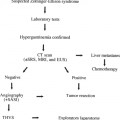
Physical Examination of Hemodialysis Access
Screening for impending failure of hemodialysis grafts and fistulae is an integral part of the overall management of the patient on hemodialysis. Prompt detection and prophylactic treatment of lesions threatening access failure result in prolonged access survival and a decreased number of thrombotic episodes.1–6 There is an ever-increasing array of screening modalities available to detect these lesions, ranging from inexpensive to quite costly and from simple to highly sophisticated. To date, none of these has emerged as the preferred modality,7 but the Dialysis Outcomes Quality Initiative (DOQI) states that some form of screening should be performed at least monthly and the physical examination weekly.7
Often lost in the plethora of screening techniques is the utility of the physical examination as a simple, essentially cost-free and highly effective screening modality. By understanding a few basic principles and using one’s fingers and on occasion a stethoscope, impending access failure can be detected on the weekly physical examination, thereby obviating many of the more cumbersome and costly screening techniques. In addition, the physical examination can be helpful in detecting lesions such as central venous stenosis, which may not threaten a graft but may cause significant discomfort to the patient. It also can be used to guide percutaneous interventions. This discussion covers the normal physical examination of dialysis grafts and fistulae as well as abnormal conditions such as impending access failure, central venous stenosis, a graft infection, and pseudoaneurysm. Although many similarities exist between grafts and fistulae in terms of the physical examination, there are enough differences between them that it is useful to divide the discussion along those lines.
 Grafts
Grafts
Whether in the forearm, upper arm, shoulder, thigh, or exotic configuration, all dialysis grafts have several things in common. The common factor first is that they have an arterial and a venous anastomosis, and one must learn to distinguish between these two. This is important not only for cannulation but may have importance in planning interventions. Although most patients may be able to tell you which end of their graft is arterial or venous, a simple maneuver to tell the difference is to compress the graft firmly in its midpoint. Assuming it is a functioning graft (i.e., not thrombosed) the portion that remains pulsatile during compression is the arterial end of the graft.
Normal grafts have a thrill throughout their entire length. There may be slight pulsatility to this, particularly at the arterial anastomosis, but the thrill should be continuous and should dominate the examination. We find it useful to examine the graft at three points so as not to miss intragraft lesions: near the arterial anastomosis, near the venous anastomosis, and halfway between these two.8 Other characteristics that should be evaluated include the skin around the graft, which should be free of erythema and tenderness which may indicate infection (see later). The graft should be fairly uniform throughout its course in terms of size, and focal areas of dilatation may represent pseudoaneurysms or graft degeneration. In general, these areas are not of concern unless there is skin breakdown or unless they compromise puncture because since they themselves should not be used as sites for dialysis needle placement.7 Having determined which is the venous anastomosis, the venous outflow should be followed as far as possible up the arm, and any transition should be found, particularly if the graft is pulsatile (see later). The patient’s upper arm and shoulder (or leg in the case of a thigh graft) should be examined for collateral vessels and swelling, which may indicate the presence of underlying central venous stenosis. Arterial pulses in the extremity should be examined and documented. Finally, auscultation of the graft should be performed. On auscultation, the graft should have a continuous bruit, low in pitch and soft. In the presence of stenosis, the bruit will be discontinuous, confined to systole, and it will be harsh and high pitched. It will be most abnormal at the site of stenosis; thus, the entire access should be examined.9
Detection of stenosis in a failing graft is based on the simple principle that as stenosis develops within the graft or venous outflow, the graft simply becomes an extension of the artery, becomes more and more pulsatile, and has a progressively decreasing thrill. When the graft becomes predominantly pulsatile, failure (thrombosis) is imminent. Although stenosis may occur at any location in the graft, venous outflow stenosis is by far the most common (Fig. 18–1). Thus, the most common abnormal physical examination will be pulsatility of the entire graft with a transition to a thrill at the point of the stenosis, usually the venous anastomosis, as pressure is dissipated across the stenosis. This abrupt transition is a sure sign that there is an underlying stenosis, which should be diligently sought for whenever there is a pulsatile graft. Careful examination of the venous outflow up the arm may detect this transition and allow localization of a stenosis even well beyond the venous anastomosis.
Stenosis within a graft can be slightly more confusing but can nonetheless be detected on physical examination. Intrograft stenoses usually occur at one or two locations within the graft and most commonly at both locations (Fig. 18–2). Such stenoses are usually due to suboptimal needle rotation with repeated puncture in the same location for the arterial and venous needles respectively. In this situation, the graft will be pulsatile up to the stenosis in the arterial limb, may be variably pulsatile between the two stenoses and may have a thrill beyond either of the stenoses. The portion of the graft beyond the initial stenosis may be more compressible or collapsed. At times, it may be difficult to feel a pulse or a thrill, particularly beyond the second stenosis. Auscultation may be helpful in this setting in particular as a harsh murmur may be heard at each point of stenosis within the graft.
Stay updated, free articles. Join our Telegram channel

Full access? Get Clinical Tree



